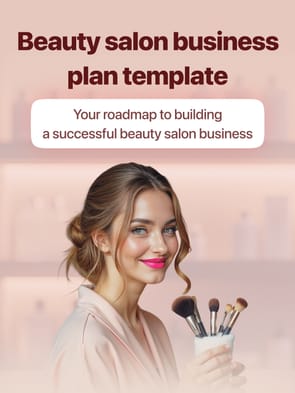How to become a distributor of beauty products
Loading the Text to Speech Player...
Navigating the beauty industry and wondering how to become a distributor of beauty products? It's simpler than you think. Join me as I break down the straightforward steps to get you started on this rewarding journey.
Who is a cosmetic distributor
At the heart of the beauty industry, a cosmetic distributor serves as the vital link between manufacturers and retailers or consumers. So, what does it mean to become a cosmetic distributor? Simply put, when you become a distributor of wholesale beauty supply, you buy these products wholesale from brands or manufacturers and then sell them to retailers or directly to end consumers.
Let us imagine a woman who wanted to know how to become a distributor of beauty products. Her name is Sarah. After conducting thorough research and connecting with several cosmetic brands, Sarah started her venture. She sourced organic skincare lines at discounted rates and then supplied them to local beauty salons and spas. In time, Sarah expanded her network, adding more brands and reaching out to online retailers.
The key here is that Sarah did not manufacture the products herself. Instead, as a cosmetics distributor, she built relationships, understood market demands, and provided a platform for brands to reach a broader audience.
Thus, if you're aiming to become a cosmetic distributor, your role will primarily focus on procurement, sales, and building meaningful partnerships within the industry.
It's a dynamic role perfectly suited for those who love beauty, business, and forging connections!
Types of beauty products distributors
So, you've decided to tread the path Sarah did, and you're excited about delving into the world of beauty distribution. But before you set forth, it's essential to determine the type of distributor you want to become. Here, I`ll explore two primary categories: the home-based distributor and the official company distributor.
Home-based distributor
An entry-point into the world of beauty distribution, the home-based model emphasizes flexibility and personal management.
- Definition: operating from a designated home space, home-based distributors act as intermediaries between manufacturers or smaller brands and a targeted customer base.
- Advantages: reduced overhead costs, flexible working hours, and the ability to curate a specialized product selection.
- Considerations: to successfully navigate this model, one must understand how to become a cosmetic distributor, catering to localized clientele while balancing other personal commitments.
Official company distributor
A more extensive, structured approach to beauty distribution, this model emphasizes scale and formal partnerships.
- Definition: as an official distributor, one collaborates with established brands or manufacturers to represent and distribute their products within specific regions or territories.
- Advantages: potential for higher revenue, working with recognized brands, and the opportunity for exclusive distribution rights.
- Considerations: comprehensive knowledge on how to become a distributor of beauty products is essential. It involves a more significant initial investment, structured operations, and an expansive logistical framework.
Both these avenues have their pros and cons. While the home-based distribution model offers flexibility and lower initial costs, it might demand more hands-on involvement and may have a slower growth trajectory. In contrast, becoming an official company distributor may require a larger initial investment and more formalized structures. However, it can provide stability, larger profit margins, and potential for rapid growth.
In conclusion, determining the type of beauty product distributor you want to become depends on your resources, vision, and passion for the industry. Whether you start small or go big, the beauty world holds ample opportunities for those willing to explore, learn, and connect.
Streamline your salon inventory now!
Say goodbye to inventory chaos! Our salon order planner tool lets you set precise reorder points, track products effortlessly — save time. Download now to simplify your salon operations!
Oh no! We couldn’t subscribe you ☹️
Done! We've sent a link to your Email 📨
How to become a distributor of beauty products
Diving deeper into the world of beauty distribution, you may wonder about the tangible steps to truly become a cosmetic distributor. It's more than just a title; it's a synthesis of knowledge, experience, and strategy.
Let's delve into the details that transform passion into a successful enterprise. Read on.
Make a research
Knowledge is the foundation of any successful venture. Begin by researching the beauty industry's landscape. Understand the popular brands, emerging trends, and the specific needs of potential markets. Which products are in demand? Which regions lack specific brands? Answering these questions will give you an edge in making informed decisions down the line.
Complete an internship
While research offers theoretical knowledge, hands-on experience can be invaluable. Consider completing an internship with an established distributor, beauty brand, or even a retailer. This real-world exposure can provide insights into the operational nuances of the beauty industry, from inventory management to client relationships. Plus, it's an excellent way to network!
Choose a company or brand
Once equipped with knowledge and some experience, decide on the brand or company you wish to represent. Are you inclined towards organic skincare lines or high-end luxury cosmetics? Your choice will dictate your target market and potential business growth. Remember to align with a brand whose ethos and product quality resonate with you.
Understand business models from production to distribution
To be a successful distributor, you must understand the entire lifecycle of a beauty product. This includes everything from its production, packaging, pricing, to its final distribution. Familiarize yourself with terms of purchase, delivery schedules, and return policies. The more seamless your understanding of this process, the smoother your distribution venture will be.
Take care of the license
For those venturing into beauty distribution, securing the right permits is crucial. Most beauty agents are typically required to obtain a vendor's permit. The specifics – from necessary forms to payment details – can vary. For clear guidance on acquiring your vendor’s license, it's recommended to reach out to your county auditor’s office. They'll provide the comprehensive instructions and details you need to move forward.
Create a webpage
In the digital era, a strong online presence can make all the difference. If you're looking to establish credibility and reach a wider audience, consider setting up a professional website to showcase the brands and products you distribute. This virtual storefront should be user-friendly, mobile-responsive, and search engine optimized, allowing potential clients to easily explore and engage with your offerings.
However, if developing a full-fledged website isn’t immediately feasible, leveraging social networks is an excellent alternative. Platforms like Instagram, Facebook, and Pinterest can serve as effective promotional tools. Just ensure your social profiles are well-designed, curated, and make product selection straightforward for users. Whether through a website or social media, your online presence should reflect your brand's ethos and commitment to quality.
Get start
Taking the initial steps into the realm of beauty distribution is an exciting phase. Once you’ve officially commenced as a beauty supply distributor, your chosen corporation or brand will typically equip you with a start-up kit. This kit is curated to provide you with all the essential tools and resources to kickstart your business journey. From product samples, promotional materials, to detailed brand guidelines, this starter pack is designed to ensure you hit the ground running. With this support, you're not just starting a business; you're entering a partnership that seeks mutual growth and success.
Final thoughts
Becoming a cosmetic distributor isn't just about the initial steps you take, but the consistent effort and passion you pour into it each day. The beauty industry is vast and ever-evolving; staying committed, adaptable, and proactive will be your greatest assets.
Remember, every successful distributor once started where you are now. With dedication and the right strategies, you too can carve out a niche in this vibrant world of beauty. Embrace the journey, and let your work speak for itself.
 The latest articles and industry insights delivered to your inbox
The latest articles and industry insights delivered to your inbox
Subscribe to receive a monthly digest of our most valuable resources like blog posts, whitepapers, and guides.
Oh no! We couldn’t subscribe you ☹️
Done! You've subscribed 💛
Unsubscribe anytime. Your data is stored for business-to-business communication purposes. See our Privacy policy.
Frequently asked questions
Who is a cosmetic distributor?
A cosmetic distributor acts as a bridge between beauty product manufacturers and the end consumers or retailers. They are responsible for procuring, storing, and selling beauty products to various channels.
What types of distribution of beauty products exist?
Two primary types dominate the beauty distribution landscape: home-based distributors, who operate on a smaller scale usually from their residences, and official company distributors, who represent established brands on a larger scale and in specific regions or territories.
How to become a distributor of beauty products?
To become a distributor, one must conduct research, undergo internships, select a brand, ensure legal compliance, create an online presence, and devise a marketing strategy.
Last updated on Mar 16, 2024
“What Changed” in this article? Everything. It's packed with the latest findings, the ripest data, and a fresh analysis you won't find anywhere else.
A subject-matter expert wrote the content, and reliable, official sources support it. Recent research has been incorporated to maintain relevancy and accuracy.
Please share this post
Table of Contents
Who is a cosmetic distributorTypes of beauty products distributorsHome-based distributorOfficial company distributorHow to become a distributor of beauty productsMake a researchComplete an internshipChoose a company or brandUnderstand business models from production to distributionTake care of the licenseCreate a webpageGet startFinal thoughtsFrequently asked questionsUnlock FREE bonus material!
Get your hands on "Beauty salon business plan". Subscribe to our newsletter and receive a link to download it straight to your inbox.
Oh no! We couldn’t subscribe you ☹️
Done! We've sent a link to your Email 📨
Trusted by the best in the beauty industry.
Transform your beauty business with Suplery!
Already enjoying our expert tips? Take the next step and join Suplery to revolutionize your business operations.
Huge range of professional products
One-click checkout after first order
Automated predictive orders
Seamless inventory management
From words to action
Start working with Suplery and explore all the tools and services you need to expand your business
Get started with Suplery24/7 Support
Secure payments
Designed by industry’s experts



